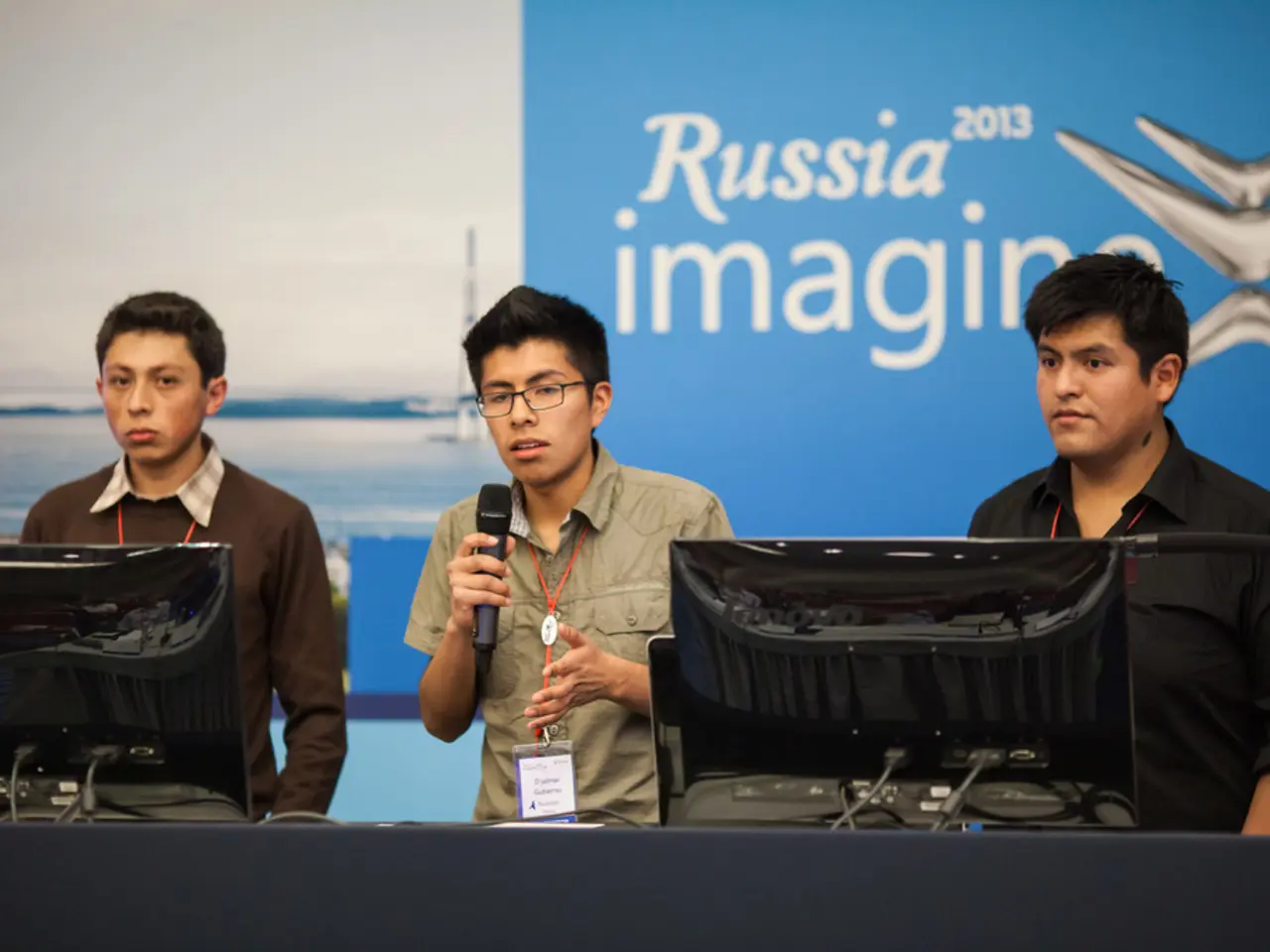Hagia Sophia installs artificially intelligent surveillance system for crowd control and access monitoring.
The historical landmark of Hagia Sophia has recently undergone a series of technological advancements and AI applications to provide a more enjoyable and secure experience for its millions of annual visitors.
Recent Technological Advancements
One of the most significant changes is the introduction of an AI-supported security system. These cameras, strategically placed throughout the structure, alert personnel if visitors enter restricted areas, increasing response speed and safeguarding the structure [1][3].
A comprehensive visitor management system has also been implemented, separating entry and exit routes for worshippers and tourists. This system has eliminated long queues and protects the architecture, mosaics, and other significant works of art [1][3].
In January 2024, an audio narration system was launched, offering explanations in 23 languages. This feature enriches the understanding of visitors without disturbing prayers [1].
A digital twin project is also underway, supporting restoration efforts focused on the domes, minaret, and courtyard buildings. This project ensures Hagia Sophia remains a protected cultural landmark [1].
Purpose of Implementations
These technological advancements aim to preserve Hagia Sophia's historical fabric, enhance visitor experience, and maintain its sacred and cultural integrity. The integration of AI and modern technology helps manage the large number of visitors while ensuring the safety and security of the site [3][5].
Since the reopening, Hagia Sophia is supported by a team of approximately 300 personnel, including security, cleaning staff, and coordinators for visitor comfort. The General Directorate of Foundations, under the Ministry of Culture and Tourism, has implemented measures to ensure safety and comfort for visitors [1][5].
Restoration work has been ongoing, with the completion of the first phase of comprehensive projects. A project related to the minaret of Bayezid II is nearing completion. Work has begun on the main dome and side domes of Hagia Sophia [1].
The gallery floor of Hagia Sophia was opened to visitors on January 15, 2020, with physical security measures in place to safeguard the architecture, mosaics, and other historical works of art [1]. The Hagia Sophia Grand Mosque now offers a more qualified exploration experience for visitors, making it easier to enter and exit for worship and to explore various sections [1].
AI-supported systems have been integrated to enhance visitor experience and protect the sacred and historic integrity of Hagia Sophia [1]. The prayer environment in Hagia Sophia has been improved for those praying, and the security system has been revised and converted into an AI-supported system [1].
A comprehensive visitor management plan has been in place since January 15, 2020, separating entry and exit routes for worshippers and sightseers. Long queues at the entrance have been eliminated due to this system [1]. The audio narration system in 23 languages was installed on the same date, allowing visitors to listen to information about the mosaics, structural elements, and other features in multiple languages [1].
In conclusion, Hagia Sophia's technological advancements and AI applications not only cater to the modern visitor but also preserve the historical integrity of this magnificent structure. These improvements ensure a seamless experience for all, making Hagia Sophia a must-visit destination for tourists and worshippers alike.
[1] Source: General Directorate of Foundations, Ministry of Culture and Tourism [2] Source: Hagia Sophia Preservation Board [3] Source: Istanbul Metropolitan Municipality [4] Source: Turkish Presidency [5] Source: Council of Ministers
- The integration of artificial intelligence in the arts, such as the audio narration system offering explanations in 23 languages, enriches the cultural understanding of Hagia Sophia's visitors.
- As part of the digital twin project, AI and technology are used to support the preservation and restoration of Hagia Sophia's structures, including the minaret and domes.
- In addition to enhancing security and visitor management, the AI-supported systems in Istanbul's iconic Hagia Sophia also contribute to the preservation of its rich environmental and artistic heritage.




